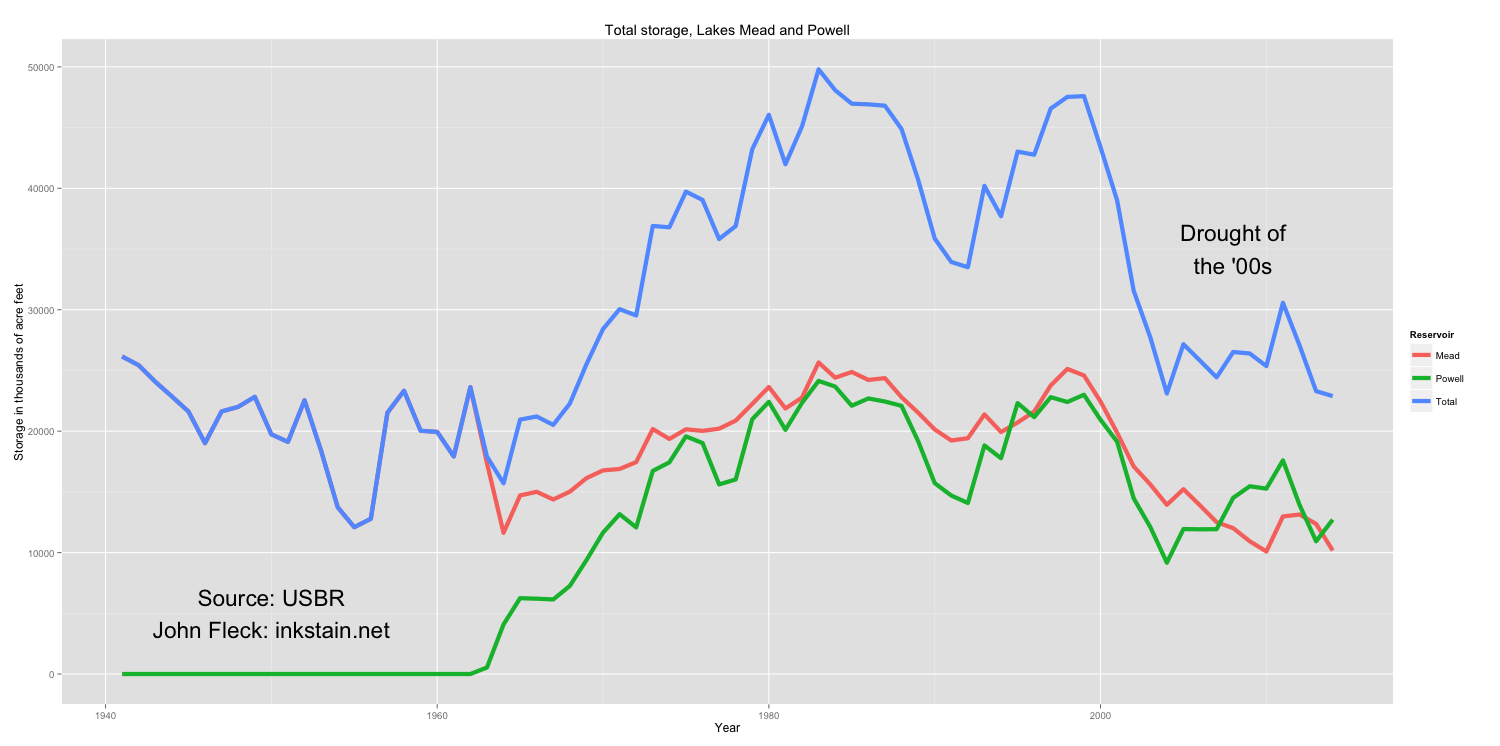The latest Bureau of Reclamation monthly basin operating report, out today (the “24-month study”, pdf), makes it increasingly clear that we’re not going to see Lake Mead drop to levels that would require a shortage declaration in 2016.
The shortage is based on Lake Mead’s surface elevation, and the trigger level is 1,075 feet above sea level. According to the latest basin operating report, Lake Mead could drop below 1,075 in the spring of 2015. So wouldn’t that trigger a shortage declaration as early as the following year, 2016, then? No. This is where the specific language of the operating rules (pdf) becomes important. The formal decision about the shortage criteria is not made until the fall, based on most likely elevation estimates of the Jan. 1 Lake Mead elevation:
In the development of the AOP, the Secretary shall use the August 24-Month Study projections for the following January 1 system storage and reservoir water surface elevations to determine the Lake Mead operation for the following Calendar Year as described in this Section 2.
Lake Mead’s currently at 1,099, and unless space aliens come down and scoop up a bunch of water we’re unlikely to see a forecast of 1,075 by the time the August 24-month rolls around. That means it’s a virtual certainty we won’t have a shortage declaration for 2015. We’re likely to see 1,075 by the spring of 2015, but as long as the August forecast shows it bouncing back by the following Jan. 1, no shortage for 2016 either. Which the latest 24-month study suggests it’s likely to do.
But as Juliet McKenna notes, odds are good (bad?) for a shortage as early as the 2017 calendar year:
This year, runoff from the Upper Basin is projected to be slightly above normal, minimizing the chance of shortage declaration in 2015 or 2016. However, for 2017, the chance still exceeds 50 percent. The past 30 years remain the driest such span on record and, with storage currently below 50 percent of total reservoir capacity, the chances for shortage become even higher after 2017.
Here’s the updated graph with estimated Mead and Powell reservoir storage through the end of September:


Not that Juliet McKenna is wrong, but given that the 30 year lookback period now does not include the 1982-83 ENSO event, I surmise that there is a better than 50% chance that the emerging ENSO harbingers of warming SST patterns and robot Kelvin waves could make for a bigger than average water year coming up. Just sayin’.
There’s not a huge correlation between ENSO and the Upper Colorado River Basin, where we get most of our water supply, so I don’t know if we can really bring ENSO into the conversation.
But there is a bit of correlation in the Lower Colorado River Basin, which, hopefully, will provide a little extra water to the system. Maybe some of that water can be used to meet Mexico water deliveries or southern California agricultural demands, which could potentially reduce releases from Hoover Dam and Lake Mead.
Pingback: El Niño and the Colorado River Basin | jfleck at inkstain
Pingback: Mead, Powell to end year at lowest storage since 1968 | jfleck at inkstain